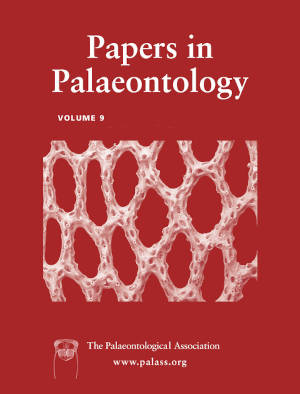Article: The oldest evidence of brooding in a Devonian blastoid reveals the evolution of new reproductive strategies in early echinoderms
Publication: Papers in Palaeontology
Volume:
9
Part:
3
Publication Date:
2023
Article number:
e1493
Author(s):
Nidia Álvarez-Armada, Jennifer E. Bauer, Johnny A. Waters, and Imran A. Rahman
DOI:
10.1002/spp2.1493
Abstract
Abstract Brooding of young is a reproductive strategy observed in many extant echinoderms, but the evolutionary history of this behaviour is largely unknown due to the scarcity of examples preserved in the fossil record. Here, synchrotron x-ray tomography is used to describe an exceptionally preserved specimen of the Devonian blastoid echinoderm Hyperoblastus reimanni. The coelomic cavity appears completely preserved in a coiled arrangement partially enclosing organs associated with the digestive, haemal and axial systems. The vault region of the coelom surrounds four structures interpreted as three internally brooded larvae and a gonad. The presence of putative larvae brooded internally in this specimen sheds new light on the reproductive strategies used by blastoids, suggesting they were sexually dimorphic and that internal brooding was acquired early in the group's history. The acquisition of brooding may have been linked to high clastic sediment influx associated with the Appalachian Orogeny, which would have been detrimental to the survival of larvae living at the soupy sediment–water interface.
